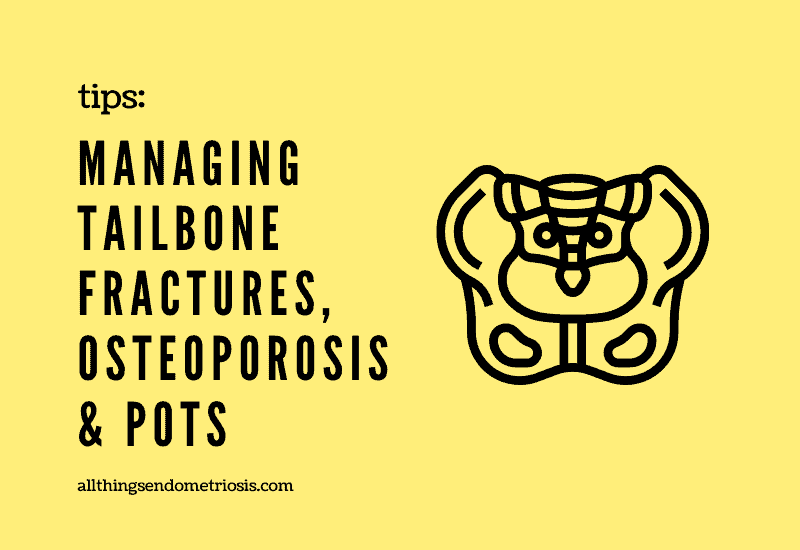
I didn’t even know that I had damaged my tailbone but it hurt – it took 13 years to know what was wrong. So, what WAS wrong? And how do I now manage the pain?
In 2005, I sat and felt the most horrendous pain ever – you know the feeling when you press a fresh bruise? it was THAT pain, but it was coming from my tailbone.
I couldn’t sit properly so I’d alternate between leaning on my right and left side but that wasn’t a great solution and somehow, I just lived with the pain for many months because I was in the middle of organising and moving to another country.
Later, after showing an orthopaedic, who didn’t even order an x-ray told me it’s probably just bruising. I didn’t know that I needed to question it further and continued to settle into the new city.
It was only in 2018, after going through many falls, because of my dysautonomia (POTS), did my new physiotherapist, who was helping me treat my hypermobile Ehlers-Danlos syndrome, ordered an x-ray.
Read here for:
- Dysautonomia: How POTS Changed My Life
- My Experience: Using Kinesiology Taping for Ehlers-Danlos Syndrome (with video)
- My Experience: Treatments to Manage Ehlers-Danlos Syndrome
Fracture of the Tailbone (Coccyx)
The x-ray showed an old fracture which didn’t join too well – apparently, it joined up in a fragmented angular manner. No wonder that I never felt comfortable, but if this had been diagnosed earlier, would I have been in a better position today?
Probably a bit, yes.
Usually a tailbone fracture takes 8 to 12 weeks to heal and it’s supposed to heal on its own. O’ and it’s a slow healer too. All not-so-great things when you have Ehlers-Danlos syndrome which makes you a slow healer anyway – O’ and like I said earlier, the POTS induced falls don’t help!
Also, I should have iced it, rested, not sat for long periods and sat on a donut shaped cushion whenever I did need to sit. But it didn’t happen, which I’ve accepted and moved on because there are larger issues at hand (umm… I know it sounds dramatic, but I’ll get to why it’s so dramatic – very soon).
Now in that report, was another kicker – the x-ray showed that the bones are severely osteoporotic.
Osteoporosis of the Tailbone
Firstly, what is osteoporosis?
Osteoporosis is a bone disease. This bone disease occurs when the bone becomes porous because the body is not able to produce enough bone and therefore it starts losing its density.
Relevant Read:
This inability to maintain bone density leads to easy breakage. You may not even need to have a major fall for the bone to fracture!
So maintaining bone density is most important.
And here I was with a severely osteoporotic tailbone!
And here I was having a couple of falls a week on my tailbone regularly from 2017 to 2018 (and still do on occasion)!
And (final ‘and’, I promise) this is the reason why I was dramatic earlier. My problem was that I had to create a larger acceptance and create a plan of action towards two things (and not be worried about why I was not diagnosed earlier):
1. I have POTS and I cannot predict the falls but I will need to really be wayyy more mindful and come up with a better plan so that I can reduce the falls.
2. That although, I have osteopenia in majority areas of my body (I did have a DEXA scan for this) – I have osteoporosis in a very vulnerable area and I need to work on reversing as much of it as possible. What also added to the cause of having osteoporosis was my stint with leuprolide injections which was taken to help me with my endometriosis. To know more about this, do read here:
My POA – How I Manage My Tailbone Issues
I’ve written about how I manage my POTS in detail right here – ‘Dysautonomia: How POTS Changed My Life’ so it’ll be more helpful to read about my management there.
As for dealing with osteoporosis of the tailbone I have done the following things:
1. Whenever I feel a flareup coming on and the tailbone begins to hurt, I roll up a large towel in a donut shape and sit on it. The tailbone needs to be in the hole of the donut so that the tailbone does not come in contact with any surface.
This helps to reduce any possible impact from me sitting long hours.
2. I go through physiotherapy on a regular basis (pre-covid times) where manual therapy helps to reduce spasms caused by this tailbone pain (also known as coccydynia).
3. At home I look to be regular with my exercising and stretching. It helps to relieve the stress felt on the tailbone and also helps to improve bone density.
A particular exercise is, I’m on my back. I bring my knees to my chest, hug my chest and gently roll back and forth on the lower back region to help stretch out the area. This really helps me feel so much better but it does need to be done regularly.
4. A good diet is always essential, especially for bone health. I have shared my overall diet right here: My Diet for Endometriosis & Ehlers-Danlos Syndrome
5. My doctor has prescribed supplements especially for my weak bone density – I won’t name it here because it can be bought over the counter and I would rather you consult with your doctor instead of self-medicating because there is such a thing as too much calcium and too much vitamin D! And we don’t wanna take something we don’t need so best to check with your doctor first.
6. I do try to ice the area to help reduce the swelling, but icing doesn’t always work well for me, so as advised by my physiotherapist, I alternate between warm and cool compressions – beginning with warm and ending with warm as well.
So those are my current 6 ways, but sadly, I haven’t yet managed to get rid of the pain entirely. It does subside and then suddenly comes back with a bang! Hopefully I’ll find a more permanent solution.
If you’ve tried something that has worked for you then please let me know too! (and I’ll speak to my doctor before I give it a go).
Thank you for reading 🙂
If you’re a social media person, then you can follow me on Instagram, Twitter, Facebook, Pinterest or YouTube.
I have a podcast too. You can check them out here along with their transcripts or if you don’t wanna read them then they’re available on Spotify and Apple Podcasts too.
~~~~~~~~~~~
Disclaimer: I am not a medical professional. I am a patient and have created this platform to share my experiences. This is all purely informative and in no way am I providing medical advice. Please consult a medical professional.


Hi Shruti,
Thank you so much for sharing. I learned a lot from this post as always and I’m thrilled you share your tips and tricks, although not thrilled to hear about your osteo. I fractured my coccyx in elementary school and they didn’t do anything you mentioned here. 🙁 Plus, hello, I have a spinal disease. My spine is crumbling. Even with new docs and appts, no one has ever mentioned the impact that had on my spine or subsequent impacts from other falls.
No one has mentioned a rolled up towel to keep it safe when I have extra inflammation happening. I’m trying that asap! THANK YOU!
I have found the cradle rocking exercise that you mentioned here to be very helpful. It definitely helps to ease lower back muscles. But I discovered that in a women’s group and now here again, I have another woman confirming what my doctors should be telling me! I always appreciate your honesty and informative posts, Shruti. You’re an amazing person! Sending spoons!
Hi Shruti,
Thank you for this! I feel really really fortunate to have never broken a bone in my life(knock on wood) but reading this was really informative. Given my partner’s osteoporosis(so far no additional falls, fortunately), this is really good to know, just in case. His issues stem from low B-12, and so far his only break was his hip joint(which was more than enough, thank you), but it’s good to know and better understand how POTS works(I have a few friends with it) as well as how you’ve been advised to manage your osteopenia/osteoporosis.
It’s really amazing what vitamins can do, and how much unintentional damage you can inflict on yourself by misusing them! I just want to affirm how important that is, as I remember reading about a vitamin study that was discontinued because of unexpected impacts – a group of people high-risk for cancer were put on a couple of vitamins that doctors thought might help slow the process- and instead the people on that particular mix of vitamins were developing cancer at a higher rate than the control group! Even though they are over the counter, vitamins need to be respected and it’s really important to understand how your body absorbs or releases them. There are some vitamins that simply pass through your system if unneeded, and others that don’t!
I’m glad that you’ve found some relief and I hope you find something that works better!
Ooh Shruti, that does souns sore (to say the least). I’m also dealing with osteopenia. I wonder if there is any link to POTS / EDS on this? I’m glad you have found ways to manage the pain, but I know that the issue of falls with POTS must weigh on your mind with this. We will have to talk about the vitamins as maybe I should take them too!
Thanks for sharing I learned a lot from this post. It really doesn’t sound like fun does it. And it’s unfortunate how Long we often need to get a proper diagnosis 🙁